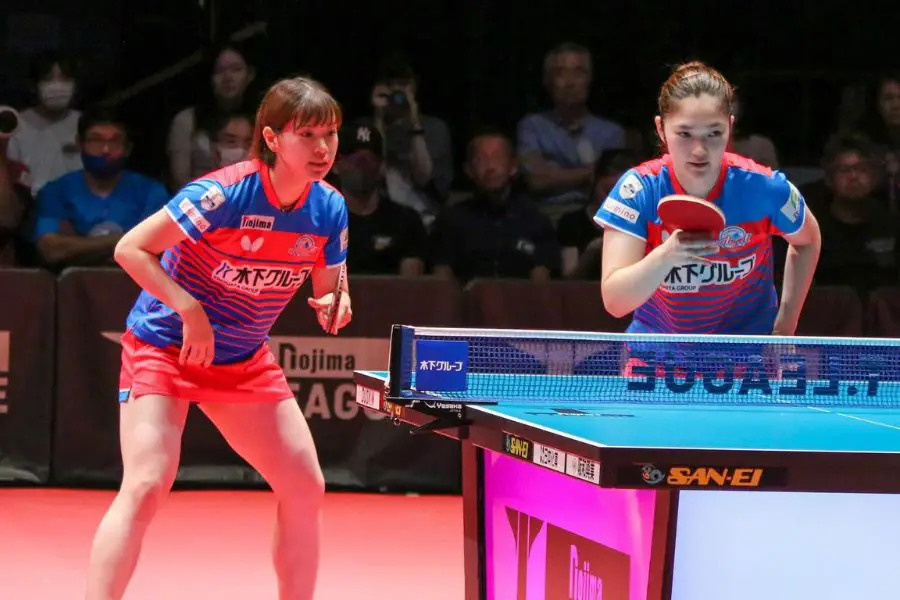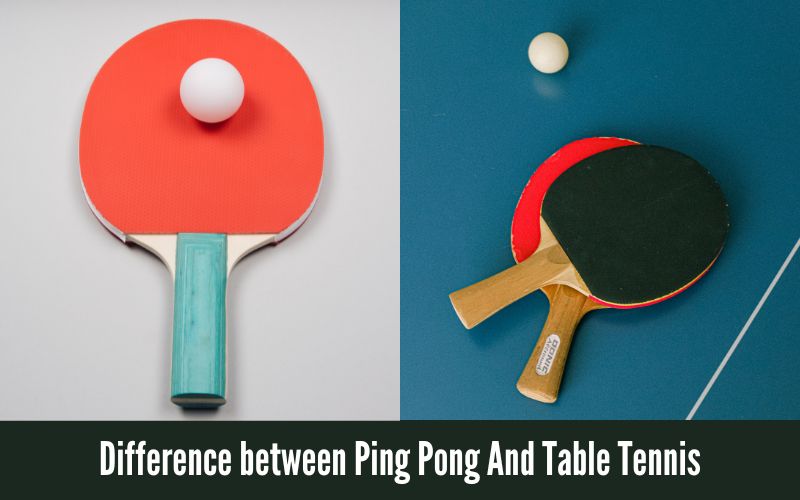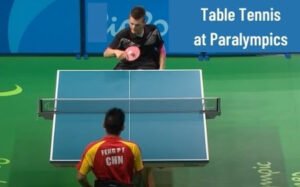In table tennis, only the serve must hit the table on each side of the net, while in ping pong, every shot has to hit the table on both sides of the net. Table tennis and ping pong are essentially the same game, with the main difference being in perception and equipment used.
Ping pong, which uses a sandpaper paddle, is commonly associated with amateur and casual play, while table tennis is a formal and highly competitive sport. Despite these distinctions, the rules of both games remain largely similar.
However, enthusiasts typically use the terms interchangeably, but the gameplay and equipment preferences set them apart. Understanding these nuances is essential for anyone interested in exploring these indoor racket sports.
Historical Context And Evolution
Table tennis and ping pong are often used interchangeably, but they do have distinct origins and evolutions. Table tennis originated in England during the late 19th century, while ping pong is said to have been developed in the 1880s in England as a parlor game and later trademarked by Parker Brothers as an American sport.
This led to a legal battle and the eventual coining of the term “table tennis.” The evolution of both sports into competitive activities also differs. Table tennis became an Olympic sport in 1988, emphasizing professional competition, while ping pong is more commonly associated with casual and recreational play, using different equipment such as sandpaper paddles.
Difference between Ping Pong And Table Tennis

The differences between Ping Pong and Table Tennis regarding equipment and gear are evident in various aspects. Firstly, the racket composition and technology vary significantly. In Table Tennis, the rackets are made of rubber sponges on both sides, offering diverse playing characteristics, while in Ping Pong, players use sandpaper paddles, resulting in different ball control potential.
Secondly, ball specifications and variations differ between the two. Only the serve in Table Tennis needs to hit the table on each side of the net, whereas, in Ping Pong, every shot has to hit the table on both sides of the net. Lastly, the standards for tables and nets also showcase disparities.
In general, Table Tennis is formal and adheres to professional standards, whereas Ping Pong is commonly associated with amateur and informal settings.
Rules And Regulations Difference
In table tennis, only the serve has to hit the table on each side of the net, whereas in ping pong every shot has to hit the table on both sides of the net. The scoring system nuances in table tennis differ from those in ping pong, and the official competitive rules also have distinctions.
Table tennis uses a rubber sponge bat for each player, while in ping pong, every player uses the same equipment, namely a sandpaper paddle.
Additionally, the usage of terms also varies, with ping pong being more commonly associated with casual or amateur play, while professional players and formal training utilize the term table tennis.
Overall, the differences lie in equipment, rules, and perception, making the two games distinct despite their similarities.
Gameplay And Style Difference
In table tennis, the serve has to hit the table on each side of the net, while in ping pong, every shot has to hit the table on both sides of the net.
The real difference lies in the approach and perception of the game. Table tennis is considered a serious, highly competitive sport, while ping pong is often seen as a casual basement or garage game for amateurs.

On the gameplay front, table tennis players use rubber sponges on both sides of the bat, whereas in ping pong, players use sandpaper paddles. Additionally, in table tennis, players tend to train formally in the sport, whereas ping pong is typically played by garage players.
The difference in equipment usage and the casual vs. professional approach sets the pace and strategy variations in the gameplay, highlighting the global perception and cultural differences between the two.
Organizational And Competitive Difference
When it comes to the organizational and competitive scene of ping pong and table tennis, there are distinct variances to consider. Firstly, in terms of governing bodies and organizations, both sports have their specific bodies which regulate and oversee their activities.
Notably, major tournaments and championships for both ping pong and table tennis are held globally, showcasing the international participation and competitive nature of these sports.
Furthermore, the recognition and Olympic participation also differ between the two, with table tennis being an Olympic sport while ping pong is not.
These differences in organizational and competitive aspects contribute to the unique identities of ping pong and table tennis.
Beyond The Play: Social And Cultural Impact
Table tennis and ping pong have often been used interchangeably, but there are some distinctions between the two. In table tennis, only the serve has to hit the table on each side of the net, while in ping pong, every shot has to hit the table on both sides of the net.
Table tennis is a serious and highly competitive sport, while ping pong is considered a basement or garage game for amateurs.
The difference also extends to the equipment used, where table tennis players use rubber sponges on their bats, whereas ping pong players use sandpaper paddles.
This difference in perception is reflected in media representation and pop culture, where table tennis is associated with formal training and competition, while ping pong is more commonly linked to recreational and garage play.
Furthermore, the influence of these sports on youth and amateurs varies, with table tennis being more prevalent in professional training and tournaments, and ping pong being embraced by casual and amateur players.
The Role Of Terminology In Perception
Table tennis and ping pong are often used interchangeably, but there are subtle differences in the terminology and perception of these games. In formal settings, “table tennis” is the preferred term, representing a serious and competitive sport.
On the other hand, “ping pong” is commonly associated with casual, amateur play in informal settings such as basements and garages. This distinction in the lexicon influences the recognition of the sports and their perceived levels of competitiveness.
Moreover, the equipment used in each game further emphasizes the difference. Table tennis players utilize specialized rubber sponge paddles, while in ping pong, players often use sandpaper paddles, reflecting the informal and recreational nature of the game.
As these sports continue to evolve, the nomenclature and the associated perceptions may also change, challenging the traditional boundaries of casual and formal play in table tennis and ping pong.
Final Thoughts
The key difference between ping pong and table tennis lies in the level of formality and equipment. While table tennis is a competitive sport with specific rules and equipment, ping pong is more casual and uses standardized sandpaper paddles. Understanding these distinctions will enhance your enjoyment of the game.



